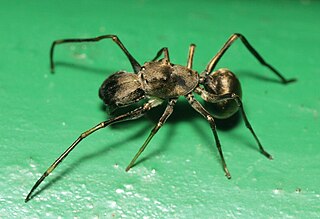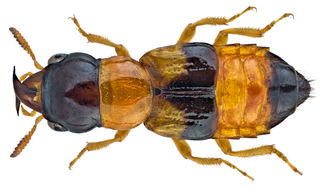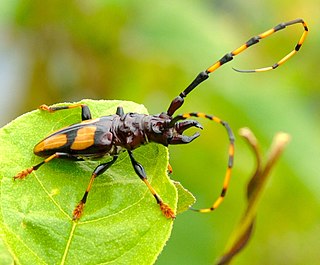
Pompanos are marine fish in the genus Trachinotus in the family Carangidae. Pompano may also refer to various other, similarly shaped members of the Carangidae, or the order Perciformes. Their appearance is of deep-bodied fishes, exhibiting strong lateral compression, with a rounded face and pronounced curve to the anterior portion of their dorsal profile. Their ventral profile is noticeably less curved by comparison, while their anterior profile is straight-edged, tapering sharply to a narrow caudal peduncle. Their dorsal and anal fins are typically sickle-shaped, with very long anterior rays and a succession of much shorter rays behind, with a similarly long & curved, deeply forked tail which has a narrow base. They are typically overall silvery in color, sometimes with dark or yellowish fins, and one or a few black markings on the side of their body. They are toothless and are relatively large fish, up to about 1.2 m (3.9 ft) long, although most species reach no more than half or two-thirds of that size. They are found worldwide in warmer seas, sometimes also entering brackish waters.

The Ilha Grande National Park is located on the border between Paraná and Mato Grosso do Sul states in Brazil. The park was created in 1997 to protect the biological diversity of the upper Parana River area.
Antillattus is a genus of Caribbean jumping spiders that was first described by E. B. Bryant in 1943. The name is a combination of "Antilles" and the common ending for salticid genera -attus.
Furculattus is a genus of the spider family Salticidae. Its only species is Furculattus maxillosus. It occurs on the Gazelle Peninsula of New Britain, New Guinea, where it was found in the canopy of rain forests.

Salminus brasiliensis, also known as the golden dorado, dorado, river tiger, dourado, or jaw characin is a large, predatory characiform freshwater fish found in central and east-central South America. Despite having Salminus in its name, the dorado is not related to any species of salmon, nor to the saltwater fish also called dorado. It is very popular among recreational anglers and supports large commercial fisheries.

The thick-billed saltator is a species of saltator in the family Thraupidae. It is found in highland Atlantic Forest in southeastern Brazil, far northeastern Argentina, and perhaps far eastern Paraguay. Unlike most other saltators, it is sexually dichromatic: Females resemble a green-winged saltator, but with a thicker bill, greener face and buff throat. The male thick-billed saltator is unique with its long white eyebrow, grey back, and black and orange beak.
Bombus maxillosus is a species of cuckoo bumblebee found in Austria, the Czech Republic, France, Hungary, Italy, Romania, Slovakia, Spain, and Switzerland. They have also been located in Zanjan where the DNA of these unlikely species are being collected and tested. B. maxillosus is considered a rare species of the cuckoo bumblebee. The B. maxillosus is an open field species and is also sometimes classified as a wood edge species.

Creophilus maxillosus, the hairy rove beetle, is a species of rove beetle.
Opistognathus is a genus of fish in the family Opistognathidae found in the Atlantic, Indian and Pacific Ocean.

Syrinx aruanus, common name the Australian trumpet or false trumpet, is a species of extremely large sea snail measuring up to 75 cm long and weighing up to 18 kg. It is a marine gastropod mollusk in the family Turbinellidae, and is the only species in the genus Syrinx.
Dendrobias maxillosus is a species of beetle in the family Cerambycidae. It was described by Dupont in 1834.

Neivamyrmex is a genus of army ants in the subfamily Dorylinae.

Leptochirus is a genus of beetles in the family Staphylinidae, the rove beetles.
Polyodontes is a genus of polychaete worms in the order Phyllodocida.

Euryphagus is a genus of longhorn beetles native to tropical Asia. It is classified in the family Cerambycidae, subfamily Cerambycinae, and the tribe Trachyderini. The generic name is derived from Greek εὐρύς and φαγεῖν referring to the broad mandibles of the males.

Toxeus is a genus of jumping spiders first described by Carl Ludwig Koch in 1846. The genus was synonymized with Myrmarachne by Eugène Simon in 1901, and remained a synonym until revived by Jerzy Prószyński in 2016, when he split up Myrmarachne.

Oxyporus rufus is a species of beetle belonging to the large family of the rove beetles (Staphylinidae).

Dendrobias is a genus of beetles in the family Cerambycidae. Members of this genus were, for several years, included within Trachyderes, but removed from synonymy in 2018.
Gnathocerus is a genus of beetles belonging to the family Tenebrionidae.












